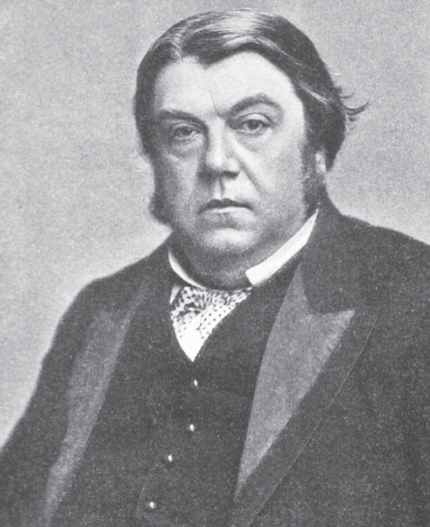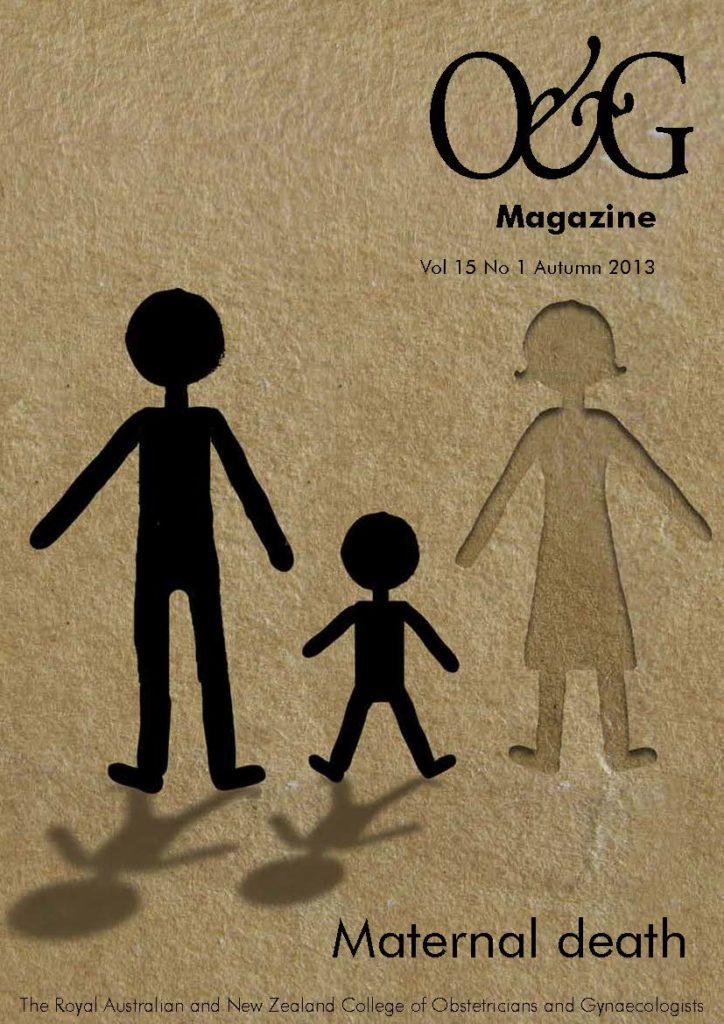The idea that ruptured ectopic pregnancy might be successfully treated by laparotomy was initially greeted with ridicule.
In the 21st century, ectopic pregnancy continues to make a significant contribution to maternal mortality rates. While figures are improving in developed countries, women in less-developed parts of the world frequently die from ruptured ectopic pregnancies that are either untreated or inadequately treated. Yet recognition of the condition and its clinical presentation, and definitive treatment, were well researched and documented more than a hundred years ago.
The first description of the mechanism of ectopic gestation comes from French physician Pierre Dionis, who in 1718 wrote, both accurately and poetically:
During the 18th and much of the 19th centuries, there was a great deal written about the possible underlying causes of ectopic pregnancy. Classifications were elaborated that usually separated continuing abdominal pregnancy from ovarian, tubal and interstitial sites of ectopics. There were a few reported cases of advanced abdominal pregnancies being successfully removed by abdominal incision, including two performed by Virginia surgeon William Baynham in 1791 and 1799; in both cases the fetus had died a considerable time before. However, everything known about major intra-abdominal haemorrhage from ruptured ectopic pregnancy came from postmortem specimens, since there was no known effective treatment for this condition.
In 1876, Philadelphia surgeon John Parry wrote of ruptured ectopic that: ‘Here is an accident that may happen to any wife in the most useful period of her existence, which good authorities have said is never cured; and for which, even in this age when science and art boast of such high attainments, no remedy either medical or surgical has been tried with a single success.’ Parry made the very radical suggestion that a possible remedy might be to open the abdomen, by the new technique of laparotomy, and then either tie the bleeding vessels or remove the gestational sac entirely, but this idea was considered ludicrous by his colleagues.
Five years later, the same suggestion was made to the eminent English gynaecological surgeon Lawson Tait of Birmingham, by a general practitioner, Mr Hallwright. Tait later wrote that ‘…in the summer of 1881 I was asked by Mr Hallwright to see a patient…in a condition of serious illness diagnosed by him as probably haemorrhage into the peritoneal cavity from a ruptured tubal pregnancy….I agreed with Mr Hallwright as to the nature of the lesion. This gentleman made the bold suggestion that I should open the abdomen and remove the ruptured tube. The suggestion staggered me and I am ashamed to say I did not receive it favourably….I declined to act on Mr Hallwright’s request and a further haemorrhage killed the patient. A postmortem examination revealed the perfect accuracy of the diagnosis. I carefully inspected the specimen which was removed and I found that if I had tied the broad ligament and removed the ruptured tube, I should have completely arrested the haemorrhage and I now believe that had I done this the patient’s life would be saved.’

Robert Lawson Tait pioneered surgical treatment for ectopic pregnancy.
Eighteen months later, in 1883, Tait was referred a similar case, and decided to operate at once; this was the first recorded case of such an attempt being made to save a woman dying from a ruptured ectopic. Unfortunately, the woman was already in extremis. Tait wrote: ‘We got her to bed alive, and that’s all that can be said…I thought very much about this case for it was a bitter disappointment.’ He decided that in any future such case he would try immediately to find the source of the bleeding and arrest it, and only then remove intra-peritoneal blood and clots.
A suitable further case was referred to him later in 1883, by a Birmingham GP: a woman with a three month history of amenorrhoea, in great pain and with marked tachycardia. Tait wrote: ‘I advised abdominal section and found the abdomen full of clot. The right fallopian tube was ruptured and from it a placenta was protruding. I tied the tube and removed it, searched for, but could not find, the foetus and I suppose it got lost among the folds of intestine and there was absorbed…The patient made a protracted convalescence but she is now perfectly well.’
Five years later, in 1888, Tait was able to report his results for 42 cases of laparotomy for ruptured ectopic pregnancy, with only two deaths, including that of his first case. In several of these cases the pregnancy had clearly been discharged from the tube into the peritoneal cavity after some weeks gestation, but had continued to grow until symptoms and signs demanded intervention. In another paper in 1888, Tait established clearly from a postoperative specimen that this course of events, hitherto only suspected, could indeed occur.
News of Tait’s successes spread rapidly and his principles, of first arresting the haemorrhage then performing meticulous peritoneal lavage, were widely adopted in Europe and America. In his major 1890 textbook, A Treatise of Gynaecology, Samuel Pozzi, dubbed the ‘father’ of French gynaecology, acknowledged Tait’s ‘remarkable success’, adding that ‘there is no longer any question that when a haemorrhage (of this kind) threatens a woman’s life it is essential to seek at once for the source of the bleeding. To procrastinate…in the great majority of cases, leads to the woman’s death.’ Furthermore, said Pozzi, Tait’s methods were by 1890 being widely followed ‘in America and Germany’ with excellent results. Pozzi devoted more than 30 pages of his textbook to the diagnosis and treatment of ruptured ectopic pregnancy; by 1890, advances in anaesthesia and widespread understanding of the principles of antisepsis meant that if the diagnosis was made early enough, in most cases the prognosis was favourable. However, the possibility of sudden unexpected collapse without previous symptoms was also widely recognised. From the beginning of the 20th century, the management of ectopic pregnancy, with early laparotomy in suspected cases, was part of every gynaecological textbook.
Lawson Tait remained a formidable pioneer in the area of surgery for women. He helped develop the surgery of ovarian cysts and tumours, in 1886 reporting 137 consecutive cases of successful ovariotomy (ovarian cystectomy) performed without a single death. In 1890, he made the suggestion that placenta praevia might be usefully treated by the relatively recently developed operation of caesarean section, with the possibility of both mother and infant surviving. Like the idea of laparotomy for ectopic pregnancy, this proposal was greeted with ridicule by his colleagues, who believed that pushing aside the placenta once labour had started and performing internal podalic version with vaginal breech delivery (with death of the fetus and often the mother) was the correct management. However, in 1898 Tait successfully performed a Porro caesarean (caesarean followed by subtotal hysterectomy) in a case of central placenta praevia, with both mother and baby surviving. Sadly, Tait died the following year, at the relatively young age of 54, probably depriving gynaecological history of more remarkable performances.
Laparotomy remained the mainstay of treatment – and indeed of diagnosis – of ruptured ectopic pregnancy until the last two decades of the 20th century. Diagnostic ultrasound, quantitative measurement of ß-HCG levels and laparoscopic surgery now mean that in most cases of ectopic laparotomy can be avoided and often medical management using methotrexate is curative in early cases. However, the sudden catastrophic intraperitoneal haemorrhage can still occur and the diagnosis and management of acute ruptured ectopic pregnancy should be familiar to all doctors practising abdominal surgery, especially in remote or less-developed regions of the world. Women continue to die from this condition, even in 2013, because treatment is too little, too late, or not accessible.
References
- Ricci J. A genealogy of gynaecology. Philadelphia: Blakiston, 1943.
- Parry JS. Extra-uterine pregnancy: its causes, species, pathological anatomy, clinical history, diagnosis, prognosis and treatment. London: HK Lewis, 1876.
- Ellis H. Famous operations. Philadelphia: Harwal Publishing, 1984.
- McKay W. Lawson Tait – his life and work. London: Bailliere, Tindall and Cox, 1922.
- Tait L. Lecture on a case of ruptured ectopic pregnancy. Lancet; September 1st 1888: 409.






Leave a Reply